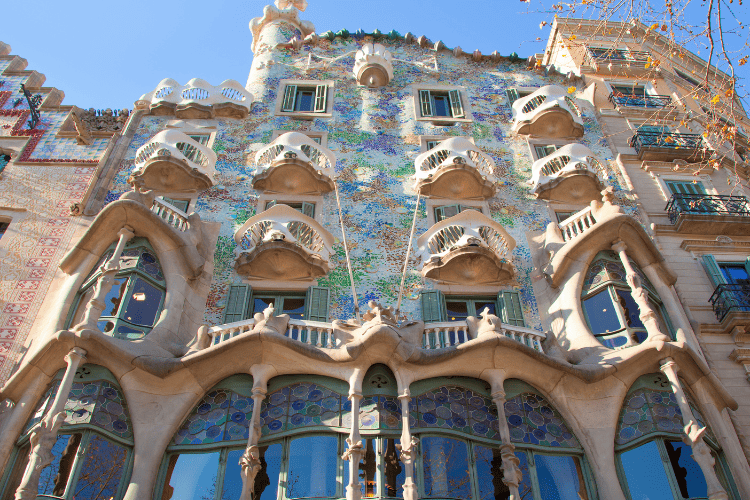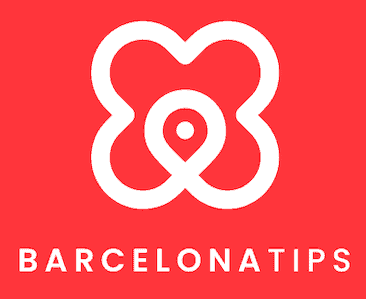One of Gaudí’s most famous masterpieces truly belongs in a fairy tale.. Casa Batlló located on the chic Passeig de Gràcia was commissioned by the wealthy textile magnate Josep Batlló; he wanted his house to look like no other houses. And he succeeded. The striking features of this modernist landmark are its round shapes and colorful facade. Do you recognize the “dragon’s tail” on the roof? The house is an homage to the Catalan patron saint Sant Jordi (Saint George), who, according to legend, freed the region from a dangerous dragon.
| Casa Batlló | Tickets, opening hours & public transport |
|---|---|
| Tickets | Tickets €35 including audioguide Children up to 12 years old: free Junior (13-17 years): €29 Students: €29 Over-65s: €32 |
| Address | Passeig de Gràcia 43 (Eixample) |
| Public transport / metro | Metro: Passeig de Gràcia (L2, L3 en L4) Buses: H10, V15, 7, 22 en 24 |
| Opening hours | Monday through Sunday from 9 a.m. to 8 p.m. |
Contents
- What is Casa Batlló?
- Visiting Casa Batlló
- Tickets, tours and guided tours Casa Batlló
- Practical information
- How do you get to Casa Batlló?
- Address
- What can you see and do while visiting Casa Batlló?
- History and architecture of Casa Batlló
- Mansana de la Discòrdia
- Video mapping on the facade
- Want to read more?
What is Casa Batlló?
Casa Batlló is one of modernist Antoni Gaudí’s famous houses on Passeig de Gràcia and an icon of Barcelona’s Eixample neighborhood. Its façade is fairy-tale like and so is its interior. Casa Batlló is considered by many to be a perfect example of Gaudí’s work, thanks in part to the abundance of Catalan symbolism that characterizes the building. Since 2005, the house has been a UNESCO World Heritage Site. Also a favorite with children. In short, a must-see and must-visit for those who love Gaudí’s creativity.
Visiting Casa Batlló
Many people only visit the outside of Casa Batlló and admire its façade, but the interior is also well worth a visit. A tour of the house takes just under an hour. The entrance, the second floor, the patio, the attic and the roof terrace – with about four chimneys typical of Gaudí’s residential houses – are open to visitors.
The house is wheelchair accessible inside and you can take the elevator from one floor to the next, but it’s also well worth walking Gaudí’s fantastic staircase.
You are allowed to take pictures everywhere in Casa Batlló.
When is the best time to visit Casa Batlló?
The timing for your visit does not matter much, as you are mainly inside. If you want to avoid the crowds at this Gaudí gem, it is best to go early in the morning or at the very end of the day, that is when it is usually the quietest inside. If you don’t mind getting up early and would like to visit Casa Batlló before all the crowds, there is a special ticket which gives you access at 8:30 or 8:45.
Tickets, tours and guided tours Casa Batlló
Be smart and buy your tickets in advance online
Casa Batlló is usually incredibly busy and you can see the long queues in front of the ticket booth from miles away. My advice is to reserve your tickets in advance so you don’t waste time waiting at the ticket booth. Because they work with time slots, the line to get in is quite fast. If you still want to get in extra fast, you can order the more luxurious ‘golden’ ticket which includes a ‘skip the line’ addition. The differences between the tickets are explained below.
Since a fantastic audio guide is included with your ticket, it is not necessarily required to visit Casa Batlló with a guide, join a guided tour or hire an additional audio guide. Practical and also educational!
I have listed all the different types of tickets for you below.
1. Blue: standard ticket
The most common ticket is the blue ticket. This gives you access to most rooms, the roof terrace, the backyard and the Gaudí Cube. The Gaudí Cube is a space with a very fun 360º experience in which artist Refik Anadol transports you into Gaudí’s mind.
The blue ticket costs €35; children under 12 get in free. Under 17, the cost is €29, for students €29 and over-65s €32. (On weekends, prices may be a few euros more expensive).
2. Silver: luxer ticket
The silver ticket of course features everything that the blue ticket also has, but additionally offers access to the original concierge room and the Gaudí Dôme: a special space that takes you to the origin of Gaudí’s inspiration: nature. Also included with the silver ticket is a Virtual Reality tablet that really brings the house to life.
The silver ticket costs €43 for adults. If you are between the ages of 13 and 17, you pay €37 and admission is free up to age 12. Over-65s pay €40 and students €37. (On weekends, prices may be a few euros more expensive).
3. Gold: vip-ticket
Want to make the most of your visit to Casa Batlló? Then the gold VIP ticket might be the most suitable. This has everything that is included in the blue and silver ticket but also gives you access to the Batlló family’s private quarters and allows you to enter through the VIP lane.
The gold ticket costs €2 more than the silver ticket. Adults thus pay €45, young people between the ages of 13 and 17 pay €39, those over 65 pay €42 and students pay €39.
4. Be the first: morning admission with skip the line
Want to visit Casa Batlló without too many other people? Then get up early and buy the ticket that lets you enter at 8:30 or 8:45! The ticket has the same entrance benefits as the blue ticket but you will be the first to enter the building. This ticket costs €45 for young people between 13 and 17 and students pay €39. Those over 65 pay €42. Children up to and including 12 can enter for free.
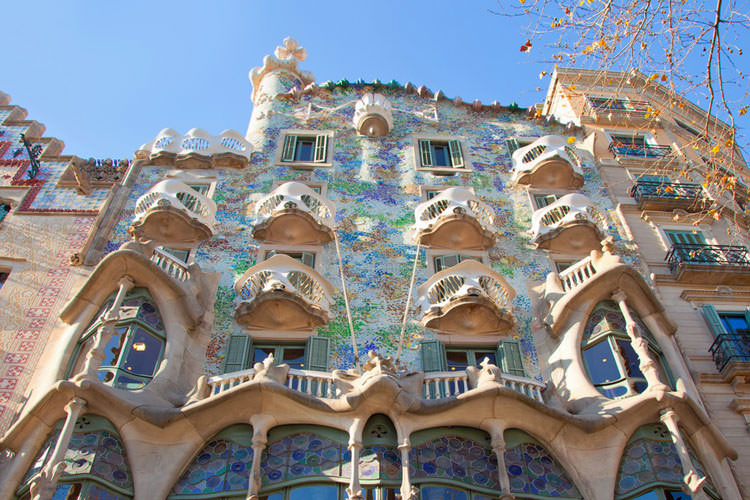
Combination tickets
If you plan to visit multiple sights in Barcelona there are useful combination tickets. I have listed below the most convenient combination tickets with Casa Batlló.
1. Combination ticket: Casa Batlló + Casa Milà (La Pedrera)
Would you like to visit both Casa Batlló and Casa Milà, Gaudí’s two most famous houses located close to each other? For this very purpose, there is the combo ticket that includes both houses. Perfect to compare the differences and similarities between these two masterpieces by Gaudí.
The price for the combination Casa Milà & Casa Batlló is the same if you were to buy the respective tickets separately, but with this combination ticket you only have to go through the booking process once.
2. Combinatietickets: Casa Batlló + Sagrada Família en/of Park Güell
Most people also visit the Sagrada Família and Park Güell. If you do plan to visit several of these highlights, it’s smart to buy a combination ticket so that you can get up to 11% off.
3. Combination ticket: Casa Batlló + the Hop-on Hop-off bus
Want to visit Casa Batlló and use the Hop-on Hop-off bus to explore the city? Then you should buy this combination ticket. You also get a 10% discount with this combination ticket.
Practical information
Prices
Adults: €35
Children up to 12 years: free
Youth 13-17 years: €29
Students: €29
Over-65s: €32
Opening hours
Monday through Sunday from 9 a.m. to 8 p.m.
Time slot
Note that Casa Batlló works with fixed visiting hours. This means that you need to decide in advance (when booking your tickets) what time you want to visit this sight. Then make sure to be at the entrance on time as well. You can print your tickets or easily save them on your smartphone.
How do you get to Casa Batlló?
Address: Pg. de Gràcia 43 (Eixample)
Metro: You can get to Casa Batlló quite easily by metro. The nearest metro stop is Passeig de Gràcia, where metro lines L2 (purple line), L3 (green line) and L4 (yellow line) stop.
Walking: from the city center, it is a great walk to Casa Batlló. You are about ten minutes away from Plaça Catalunya and you can visit the beautiful Passeig de Gràcia during your walk.
Bicycle: cycling to Casa Batlló is also easy from the city center. From Plaça Catalunya, it takes about five minutes.
Hop-on Hop-off bus: both the northern and southern routes of the Bus Turístic (the blue and red routes) stop right across from Casa Batlló.
Adress
Adress: Pg. de Gràcia 43 (Eixample)
What can you see expect visiting Casa Batlló?
Casa Batlló has a basement, a first floor, four floors, an attic and a roof terrace. Highlights of the visit include the fantastic façade, the old residence with the living room with its beautiful stained-glass window, the blue-tiled patio (if you can, take the stairs instead of the elevator, you’ll see a lot more) and the roof terrace, where you’ll have a great view of the city.
Façade
The wavy roof is reminiscent of the skin of a fish or the tail of a dragon or reptile. The imposing columns at the entrance resemble the legs of a dinosaur or a mammoth, and the balconies stare toward the street like huge jaws of sea creatures or perhaps skulls: the mosaic façade in various shades of blue and green glistens at passersby from afar. Gaudí’s Casa Batlló is a modernist fairy tale, and this is best seen at the façade.
According to many, the façade of Casa Batlló represents the legend of Saint George (Sant Jordi) and the dragon. Saint George is the patron saint of Catalonia.
At the time Gaudí accepted Batlló’s commission, this building was an ordinary one along Passeig de Gràcia. Gaudí, however, turned it into perhaps the most startling facade on the chic promenade. He made sure the facade was no longer straight, but wavy and full of relief.
Also pay attention to the doors: Salvador Dalí once said Gaudí’s doors were made of velvet, and at Casa Batlló you do indeed get that feeling.
The legend of Sant Jordi
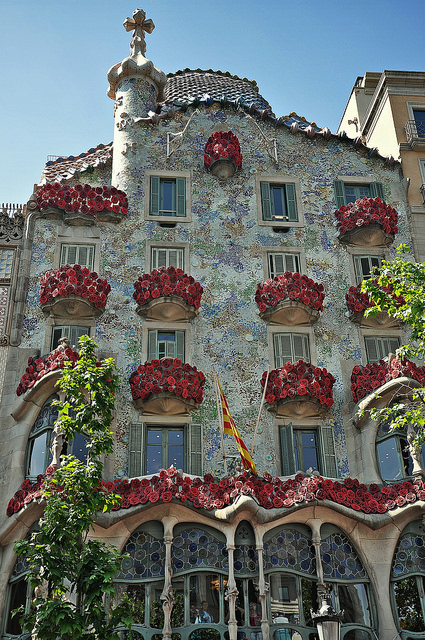
In English speaking countries we know Sant Jordi as Saint George and he is traditionally portrayed with a dragon. In Barcelona and the rest of Catalonia, you come across the name everywhere (for example, the Palau Sant Jordi on Montjuïc, where major concerts are held). This Jordi – at least according to legend – managed to rid the region of a dragon that consumed young girls with relish. When it was the king’s daughter’s turn to be eaten, the sturdy Jordi marched to the mountain with his sword and killed the dragon.
It won’t surprise you that the Dia de Sant Jordi, celebrated every year on April 23, is celebrated majorly in Catalonia. On that day Barcelona is filled with flower stalls and the intention is that all men buy a rose for the important women in their lives (so not only girlfriend or wife, but also mother, sister, daughter, mistress…). Why this tradition? According to legend, a rose bush grew from the blood of the dragon killed by Jordi, from which Jordi picked one rose, took it to the king’s daughter and asked her to marry him. April 23, 303 was the anniversary of the death of Saint George.
Incidentally, you will also see book stalls all over the city on April 23. That has nothing to do with the story of Saint George and the Dragon, but with Spain’s most famous writer Cervantes, who also died on that date (in 1616). Coincidentally, William Shakespeare also died on that day. Since 1995, World Book Day has been organized in honor of the two writers. On this day, women are supposed to buy a book for their husbands (unlike the roses, not for all the important men in their lives).
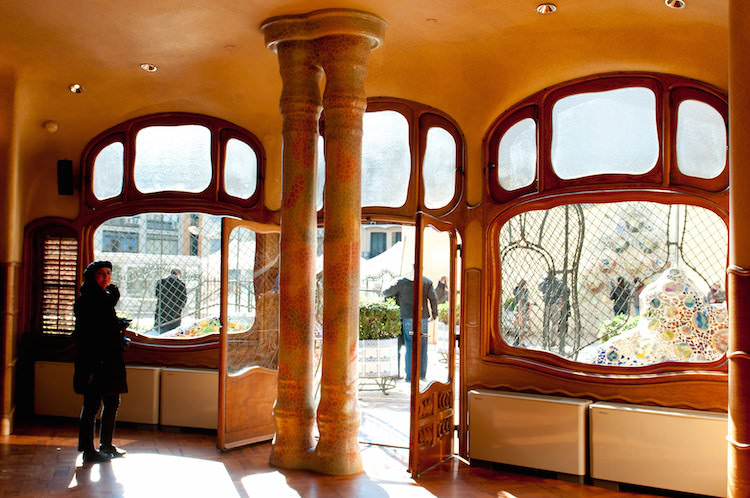
Casa Batlló from the inside..
Anyway, back to Casa Batlló. So the most common story is that the house symbolizes the legend of Saint George and the Dragon. References include the dragon’s tail on the roof, the balconies (skulls of the eaten girls) and the large pillars (bones). The chimney would refer to the spear used by St. George to slay the dragon.
Others see elements of carnival on the facade: that “dragon” on the roof is the hat of a harlequin, the trencadis (a mosaic style typical of Catalan modernism) is like confetti and the balconies are reminiscent of masks.
Planta Noble: first floor
You won’t encounter a straight wall in Casa Batlló. From the woodwork to the salon windows and from the furniture to the ceiling, everything is circular and wavy, typical of Gaudí. Moreover, the architect made the rooms flow smoothly into each other. This interior combined with the playful exterior makes Casa Batlló perhaps Gaudí’s most imaginative legacy.
The first floor was the “planta noble,” the main residential unit in the building. This is also where the Batlló family lived, in an area of 700 square meters. It can be accessed through a beautiful private hall reminiscent of underwater caves, with skylights resembling turtles, curved walls with sinuous shapes and a spectacular staircase. Also note the wooden ceilings and beautiful floors on this floor.
The living room on the first floor is one of the most beautiful rooms inside to visit. Gaudí designed a huge window here to look outside ( and to be seen). Of course, light also entered the house through this window.
Patio
The property’s patio is where the old-fashioned wooden elevator (this is the original elevator) runs. Here you immediately notice the beautiful, blue tiles that give this space a wonderful color.
Attic
The attic of Casa Batlló is one of the most unique rooms, a wonderful combination of aesthetics and functionality. Here were located the services for the tenants of the apartments of the building with laundry, storage rooms and so on.
The attic is characterized by simple shapes, the white color and the omnipresence of light. The sixty overhead arches are reminiscent of the ribs of an animal. Perhaps of the dragon above it, on the roof. This section is accessed by a spiral staircase.
Terrace
The rooftop terrace offers a beautiful view of Barcelona. This is where you will find the spine of the dragon’s tail, which you can also see from the street. For the tail, Gaudí used the much-loved trencàdis technique, in which ceramic tiles were inlaid. Also on the roof are four striking chimneys, which experts will immediately label as Gaudian.
Gift shop
Inside Casa Batlló there is also a gift store where you can get souvenirs on the theme of Gaudí and Catalan modernism.
History and architecture of Casa Batlló
The building where Casa Batlló is located was purchased in 1903 by Josep Batlló i Casanovas, a wealthy fabric manufacturer. Initially, the intention was to demolish the old house (built in 1877 by Emilio Sala Cortés) and build a completely new one in its place, but in the end it was chosen for a thorough renovation. Between 1904 and 1906, Gaudí and his men worked on the house.
Until 1945, the Batlló family lived on the first floor of the building. The rest was rented out. During the Spanish Civil War (1936-1939), Casa Batlló had housed about a hundred refugees, and after the war ended, the house was badly damaged. Since the 1990s, the property has belonged to its current owners, the family of the lollipop manufacturer ChupaChups. Through them, the house was substantially refurbished and in 2002, the International Year of Gaudí, Casa Batlló was finally opened to the public. Three years later, Casa Batlló became a UNESCO World Heritage Site (2005).
For Casa Batlló, Gaudí did not use brick, as he did, for example, in the case of Casa Vicens, his first work, recently opened to the public (November 2017). For this building, he chose the sand-colored stones of Montjuïc, reminiscent of clay.
Personal tips
- Through the terrace of the store Servei Estació (C/Aragó 270-272) you can see Casa Batlló (for free) from the back. Opposite this store is the Fundació Antoni Tàpies. A visit to Casa Batlló can be perfectly combined with a visit to this museum with the works of Antoni Tàpies.
- In summer (June-September), Casa Batlló hosts noches mágicas and you can visit the house at night. Live music, drinks and a special chance to admire the house in an even more magical setting. Your entrance ticket includes a visit to the house and a glass of cava on the rooftop terrace.
- Got hungry after (or before) the visit? Just a ten-minute walk away is one of the city’s tastiest tapas restaurants: La Cervecería Catalana (C/Mallorca 236).
Mansana de la Discòrdia
The battle for the most beautiful modernist facade was fought between 1898 and 1906 at the beginning of Passeig de Gràcia, between Carrer de Consell de Cent and Carrer d’Aragó. Consequently, this block of houses was aptly nicknamed Mansana de la Discòrdia, referring to the dispute over the golden apple “for the most beautiful” from Greek mythology, which gave rise to the Trojan War.
The block of houses of contention consists of three properties by the three most important modernist architects: Casa Amatller by Josep Puig i Cadafalch, Casa Lleó i Morera by Lluís Domènech i Montaner and Casa Batlló by Antoni Gaudí. Casa Amatller was commissioned by the wealthy chocolate manufacturer Antoni Amatller, and Puig i Cadafalch drew inspiration for its design from Flemish facades. The three houses are very different from each other. And that was not how urban planner Josep Cerdà envisioned the Eixample neighborhood he created.
Video mapping on the facade
Also very cool to visit are the mappings that are organized from time to time. During these evenings, spectacular 3D video projections are shown on the façade. In the video below you can see an example of such a beautiful mapping.
You can also witness special spectacles on the façade of Casa Batlló on other holidays and during the month of December.
Extra tip: Visiting Casa Batlló or Casa Milà (La Pedrera)?
If you have to choose between the two Gaudí houses on Passeig de Gràcia (i.e. Casa Milà or Casa Batlló) during your visit to Barcelona, I recommend buying tickets for Casa Milà (La Pedrera). Casa Batlló is definitely beautiful, especially the fairy-tale facade, but I find Casa Milà just a bit more surprising on the inside. And the roof of La Pedrera, as Casa Milà is commonly called, is also very special.
If you have already visited Casa Milà or La Pedrera, be sure to visit Casa Batlló. And if you have the chance: do both!
By the way, more Gaudí houses in Barcelona are now open to the public: Casa Vicens and Palau Güell, also worth a visit!
Want to read more?
- Also fun to read is this general article with all the ins & outs about the sights in Barcelona.
